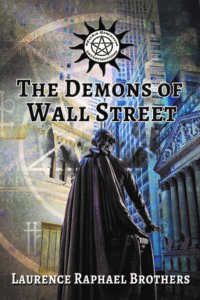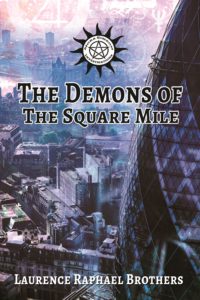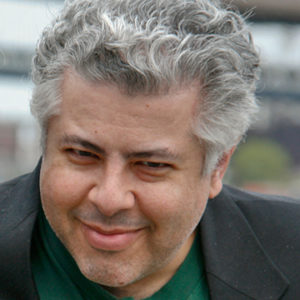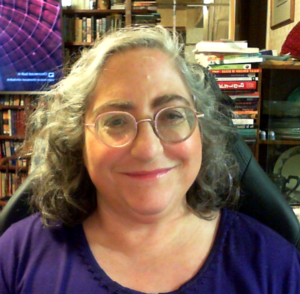It doesn’t take any very profound insight to see that the roles nonhumans play in speculative fiction are often stand-ins for humans. In first-intention and unselfaware work (two very different things, see below), nonhumans are often monstrous and hostile. They frequently stand in lieu of othered humans who the writer might think it improper to name directly, or for that matter who the writer is intentionally dogwhistling by associating their secondary attributes with the negative qualities that racism and other forms of bigotry have painted for them.
And yet there are dangerous animals and people in our world who are hostile, sometimes implacably hostile and deadly dangerous, and in principle there should be nothing wrong with embodying these figures in fantastic fiction, even in pared down and totally inhuman forms from which all other qualities but their monstrousness have been flensed. In real life, sharks and venomous snakes and grizzly bears are not generally malicious, and their relative danger is far inferior to that of automobiles, diseases, and police officers. But in fiction, does it do any harm to pretend they are terrible threats? As always, the answer is yes, and no, depending on technique and presentation.
 The trope-subversive reaction to monster stories generally involves their humanization. The dragon-viewpoint story that sees the questing knight as a villain, the sympathetic look at a fallen angel’s rebellion, the AI who comes to life only be oppressed and treated as a thing by their creator, the alien whose attempts to help humanity are viciously rebuked: all these acknowledge the base form of the monster story and turn it on its head. In many cases, the inversion is charmingly, touchingly, and effectively achieved, but again the final result depends on the author’s insight and skill, not just the fact of the reversal.
The trope-subversive reaction to monster stories generally involves their humanization. The dragon-viewpoint story that sees the questing knight as a villain, the sympathetic look at a fallen angel’s rebellion, the AI who comes to life only be oppressed and treated as a thing by their creator, the alien whose attempts to help humanity are viciously rebuked: all these acknowledge the base form of the monster story and turn it on its head. In many cases, the inversion is charmingly, touchingly, and effectively achieved, but again the final result depends on the author’s insight and skill, not just the fact of the reversal.
So what makes a monster story good or bad, or for that matter, a monstrous-sympathy or anti-monster story? In a word, understanding. In The War of the Worlds, H.G. Wells had two objectives: first to present the visceral fear of the monster to his reader, the overwhelming power of an implacably hostile foe whose strength cannot be contested. But he also wanted to present his idea of what indigenous populations such as the Tasmanians must have experienced when British colonial military forces invaded. There’s no characterization of the Martians in Wells’ book. They’re apparently trying to seize terrestrial resources, but it’s not as if they twirl their mustachios and speechify to a captive audience. They just do their thing, obliterating any opposing military forces and casually wiping out civilians who are in the way until finally they’re overcome by terrestrial disease. (This last is so that for Wells’ didactic purposes, something like the status quo can be regained, with a cautionary warning.) This is an example of a “first-intention” monster story that is nevertheless self-aware; the monsters are simple to the point of being simplistic and more or less incomprehensible, but their action and the reason for their action is based on the writer’s understanding of humanity and his hope to prevent his own people from adopting the monstrous role of his Martian invaders.
Must a good monster story always be intellectualized? Not at all, hopefully needless to say. Consider Beowulf, another first-intention story, and this one with probably considerably less deliberate auctorial intention behind it. In this story, Beowulf is a pure hero, and both Grendel and his mother are pure monsters, though the mother’s desire for revenge is only natural, and this serves in some way to humanize her. But I shouldn’t leave the reader with the idea that self-awareness and understanding are modern qualities, and that older works are necessarily simpler, more direct, and more “primitive.”
One can see some very profound self-awareness in the nameless author of the Gilgamesh epic, who takes the monstrous and frightening foe Enkidu (created by the gods to give Gilgamesh someone to fight because he’s been ruining his own subjects’ lives) and turns him into a sympathetic friend. Along with the wild and uncivilized Enkidu (humanized through sleeping with a priestess of Inanna), and apparently as a result of their coming together, Gilgamesh matures from a boorish and casually destructive youth into a mature, responsible, and reflective adult. With its transformation of Enkidu from monster into a friend so intimate as to be closer than most lovers[1], the epic’s attitude may seem implausibly modern, except of course that our intuitive notions of what constitute “modern” and “primitive” are wildly biased in our own favor. Coming thousands of years before most classic western monster stories, the transformative early section of the Gilgamesh epic (the latter half mainly involves Enkidu’s death due to Gilgamesh’s arrogance, and Gilgamesh’s futile quest to resurrect his fallen friend) illustrates that anti-monster stories are at least as old and as essential.
Man, I hope all that didn’t come off as too pompous, or too obvious either. In my own stories, I most often do the inversion thing, but I have the deepest respect for people who can write first-intention monster stories without dehumanizing the antagonists or deliberately or unconsciously linking their monsters to othered humans in the real world.
But that’s a tough thing to pull off. In my stories, the apparent monster is frequently your friend, and the real monster is another human, or perhaps the social forces that move humans to act monstrously. For me, that kind of story is much easier to write.
 My romantic noir urban fantasy series beginning with The Demons of Wall Street (Mirror World Publishing, 2020) and in its recent sequel The Demons of the Square Mile (Mirror World Publishing, 2021) features demons who are indeed monstrous in many respects, due to the horrible ecology and social forces of their native world. But they’re also oppressed slaves summoned and bound by financial industry banker-sorcerers who want to exploit their precognitive abilities to manipulate markets. Some of these demons are true to type, but others are capable of defying and transcending their origins to become people more capable of kindness and compassion than the abusive humans who summon and bind them. The real monster is late-stage capitalism; but I guess that’s either trite or obvious, depending on your point of view.
My romantic noir urban fantasy series beginning with The Demons of Wall Street (Mirror World Publishing, 2020) and in its recent sequel The Demons of the Square Mile (Mirror World Publishing, 2021) features demons who are indeed monstrous in many respects, due to the horrible ecology and social forces of their native world. But they’re also oppressed slaves summoned and bound by financial industry banker-sorcerers who want to exploit their precognitive abilities to manipulate markets. Some of these demons are true to type, but others are capable of defying and transcending their origins to become people more capable of kindness and compassion than the abusive humans who summon and bind them. The real monster is late-stage capitalism; but I guess that’s either trite or obvious, depending on your point of view.
The main character in this series, occult PI Nora Simeon, is a deeply traumatized and alienated person, in danger of becoming a moral monster herself by dint of her isolation and lack of empathy. She starts the first book convinced that demons are essentially evil and destructive (note in the books they are beings from an alien realm of existence, not fallen angels). She soon learns that just like with humans, these qualities are contingent, not essential, and in the usual moral fashion, the worst monsters are those we make of ourselves. And with the help of her unusual friend and lover Eyre (met in the first book and becoming a Thin-Man-style romantic and professional partner thereafter) she wrenches herself free from her downward spiral; it’s not an easy thing to do, and it will take her the full arc of the series to become truly free, but like the rest of us, all she can do is take the next step. My own next step is tentatively titled The Demons of Chiyoda, a just-completed first draft that I’m getting ready to submit to my publisher. In the meantime, I hope you’ll take a look at the first two entries in the series, available in paper or ebook direct from the publisher as well as from most online bookstores.
[1] I suspect this to have been the first ship in history, and that therefore the epic of Gilgamesh could be the first example of fan fiction, too.
 BIO: Laurence Raphael Brothers is a writer and technologist. He has worked in R&D at such firms as Bell Communications Research and Google, and he has five patents along with numerous industry publications. His areas of expertise include Internet and cloud-based applications, artificial intelligence, telecom applications, and online games. He has published many science fiction and fantasy stories and is a member of Science Fiction and Fantasy Writers of America. Find out more about Laurence Raphael Brothers on his website.
BIO: Laurence Raphael Brothers is a writer and technologist. He has worked in R&D at such firms as Bell Communications Research and Google, and he has five patents along with numerous industry publications. His areas of expertise include Internet and cloud-based applications, artificial intelligence, telecom applications, and online games. He has published many science fiction and fantasy stories and is a member of Science Fiction and Fantasy Writers of America. Find out more about Laurence Raphael Brothers on his website.
If you’re an author or other fantasy and science fiction creative, and want to do a guest blog post, please check out the guest blog post guidelines. Or if you’re looking for community from other F&SF writers, sign up for the Rambo Academy for Wayward Writers Critclub!













